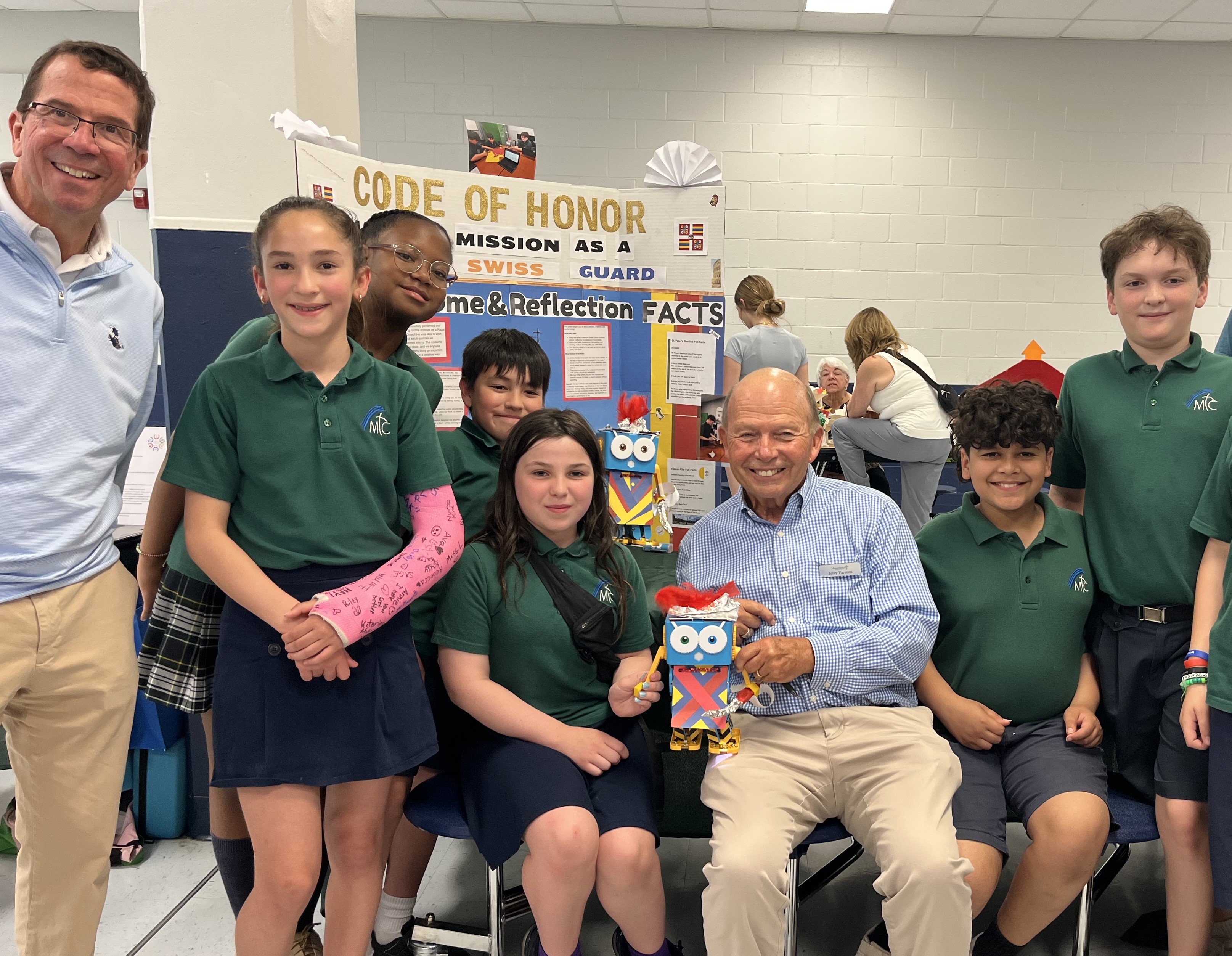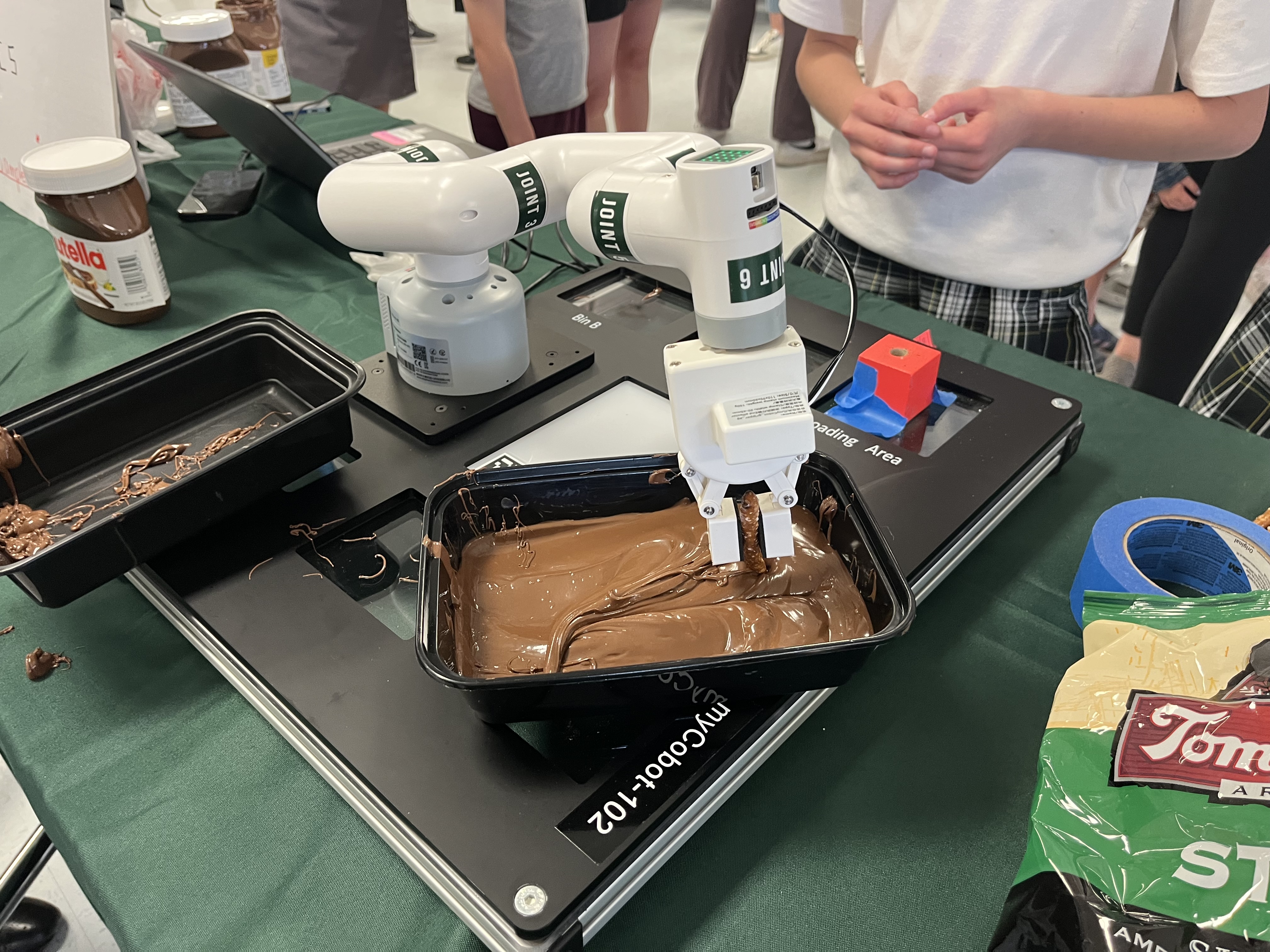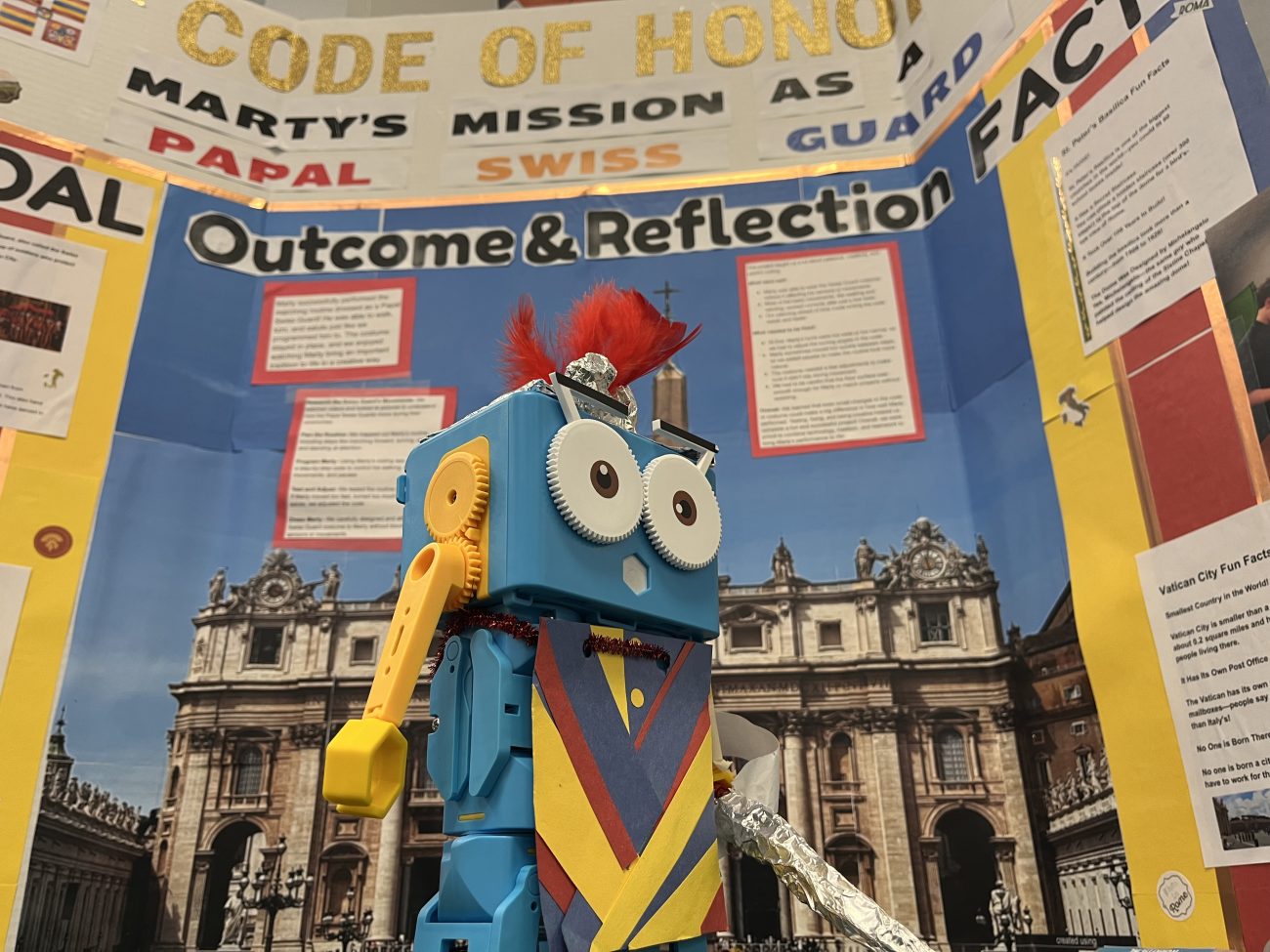Robots marched as Pontifical Swiss Guardsmen, threw ping pong “snowballs,” and danced the cha cha while their sibling bots dipped pretzel sticks in Nutella, all amidst artistic mockups of cathedrals and cheeseburger restaurants.
It was all part of the STREAM Expo and K-8 Coding and Robotics Program Competition held Tuesday, April 29 at Cardinal O’Hara High School in Springfield.
The event brought out students from 24 Catholic schools filling about 60 tables with creativity, problem-solving and ingenuity on display.
“All these children are learning the ways of Jesus every day,” said Jerry Parsons, president of the Foundation for Catholic Education and co-chair of the Executive Board of Elementary Education for the Archdiocese of Philadelphia.

Students from Mother Teresa Catholic School in King of Prussia with Jerry Parsons, president of the Foundation for Catholic Education and co-chair of the Executive Board of Elementary Education for the Archdiocese of Philadelphia. (Photo: Jay Sorgi)
“Look at the faith and the teamwork … troubleshooting your failures. It’s just the value of working together, and they’re having fun at what they’re doing.”
The blue robotic protectors of the Holy Father offered a prime example. The programmable plastic robots named Marty, along with other machines called cobots (collaborative robots) designed to work alongside human workers, offer students in grades K-12 opportunities to develop computer codes for the robots to perform a variety of tasks in a fun way.
The idea for deploying the educational robots in this way came from a Catholic school teacher who discovered her school was attending the competition at O’Hara. Her students had already been working with the robots for a year.
“I had been in Rome for Easter and when I returned back, it was just an inspiration. The kids were really interested in the topic. And we decided to make Marty a Pontifical Swiss Guard member, looking over Vatican City,” said Monique Martello, a technology teacher at Mother Teresa Regional Catholic School in King of Prussia.
“They were super excited. They came up with a military routine for the little two Martys that they coded. We found a way to make it tasteful and being very factual about some of the cool facts about the Swiss guard, and I think we achieved that.”
Their achievement won them one of numerous awards for the competition, spread amongst many of the 16 schools who took part in the robotics aspect.
Another school, Saints Peter and Paul in West Chester, helped feed snacks to the 500 attendees.
“We have a robot that will take a pretzel from a block, and it will bring it over and drag it through the Nutella,” said Ellie Wilson, a fifth grader at the school.
“Then it’s going to twist it so that it’s not so drippy, and then it’s going to give it to you.”
Perhaps cafeterias of Catholic schools in the archdiocese can take advantage of such food-serving robots, but the teaching principles behind these robotics programs extend far beyond the technology itself and into numerous aspects of schools’ curricula.

A robot programmed to grab a pretzel stick, dip in in Nutella, and serve it, from Saints Peter and Paul School in West Chester. (Photo: Jay Sorgi)
“One of the big initiatives for the Office of Catholic Education is to bring coding and robotics to the schools, and so I think we always want to reach as many subjects as we can,” said Andrew McLaughlin, secretary of Elementary Education for the Office of Catholic Education.
“When you’re doing robotics, it makes it much easier to fit into your day if you can create cross-curricular activities.”
Events such as the robotics competition encompass not only the sciences of STEM, but STREAM as well — Science, Technology, Religion, Engineering, Arts, and Math.
“In religion class, you would discuss social issues related to robotics, applying your morals and your values to how robots can be used,” said Anne Marie Fisher of the Foundation for Catholic Education. She explained that math teachers could incorporate study of algorithms, and how language-arts instructors could encourage writing in the project-based learning activity.
Even the eight schools without robots at the STREAM Expo still showcased an integrative approach to the items they showcased, such as Notre Dame de Lourdes School’s annual construction of new cathedrals at the event. These combine scientific problem-solving techniques with artistic expression and teachings of the Catholic faith.
“This is exploring with all the technology we have, and then just talking in each classroom and verbalizing what this means or what that means, (doing) a deeper dive, a whole different way of students learning and of teachers teaching,” said Notre Dame de Lourdes’ principal, Diana Pileggi.
Her school has being invited to participate in robotics during the second year of the OCE program, receiving an allotment similar to the five Marty robots and two cobots that each of 33 schools received this year from the Foundation for Catholic Education.
“Our hope is in three years, we’ll have all 102 of our elementary schools in the robotics (program),” Parsons said at the end of the event. “Some of them are already doing really fantastic things.”
Such as helping people encounter God through a bunch of dancing Marty robots.
PREVIOUS: With Change of Name, Catholic Charities of Philadelphia Returns to Roots
NEXT: Brick by Brick, St. Pius X Parish Rebuilds its School




Share this story